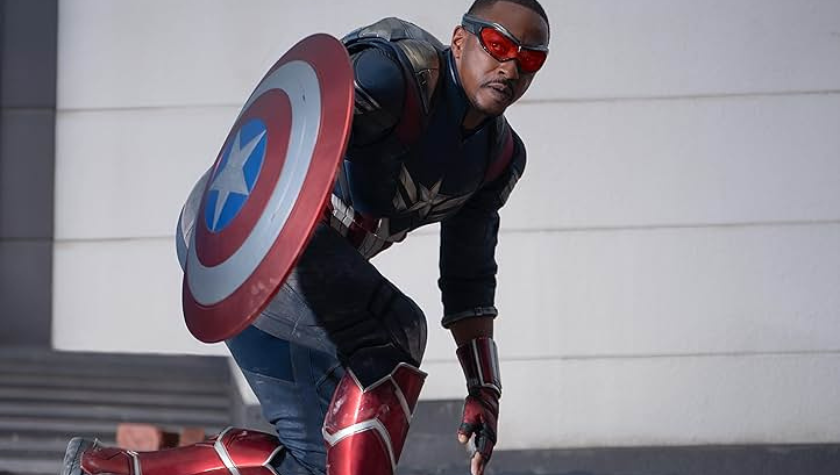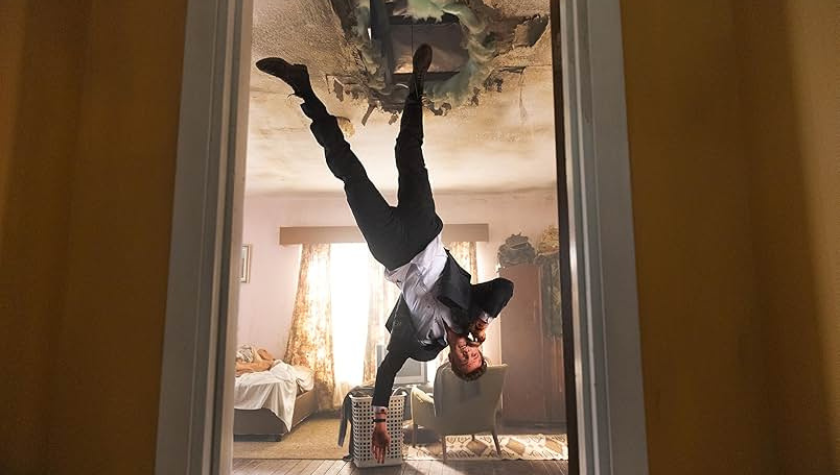How to Write Action According to Mission: Impossible – Dead Reckoning
July 14, 2023
In a cinematic world where superheroes fly effortlessly through multiple universes and the tentpole summer films have been a staple for decades, how does a movie stand out for its action sequences? For screenwriters, the thought of creating an action set piece for their screenplay can be both daunting and exciting.
With the latest Tom Cruise action-thriller Mission: Impossible – Dead Reckoning Part One, Ethan Hunt (Cruise) and his band of IMF team members are tasked once again with saving the world. Yet, if you break down the action, you begin to see that they’re crafted in an original way in spite of the idea being quite unoriginal (more on that later).
This is Tom Cruise’s seventh Mission: Impossible film in 27 years and Christopher McQuarrie’s third time directing and co-writing a film in the series.
Here are seven lessons in action that screenwriters can take away from Mission: Impossible – Dead Reckoning Part One (which I’m going to refer to as M:I 7 moving forward).
Note: spoiler alert!
1. The Car Chase
What’s an action film without a car chase? Ever since Steve McQueen roared through the streets of San Francisco in Bullitt, car chases have become a staple in action films. That was 55 years ago so you would think the world would tire of the hero hopping into a vehicle and chasing down the bad guy or having a villain trying to catch the hero.
That’s not the case. Car chases are fun and thrilling. People are glued to their TVs when there’s a real-life car chase because they want to know how it ends and if the person will escape – and that’s usually just a car driving straight on an area freeway. It’s the same thrill for movies though.
M:I 7 shows the excitement of vehicles speeding through the crowded streets of Rome. Car chases in movies often take place in cities because there are more things to hit or avoid hitting such as other vehicles like taxis, cop cars, motorcycles, etc., conveniently placed street vendor carts, tables and people.
Read More: Top 10 Movie Car Cashes
But there must be some originality to a car chase scene. For instance, in M:I 7, Hunt and Grace (Hayley Atwell) spend a portion of the chase handcuffed to one another creating an obstacle within the car. There are also several gags within the scene which add tension-breaking levity. Another example of originality is that Hunt and Grace are forced to switch cars in the middle of the chase.
When writing a car chase scene, you’ll want to think about the unique obstacles that can get in the hero’s way as well as how the chase will end — will they get caught? Escape? Get hurt?
2. Close Combat
Sometimes there are large action set pieces where the hero must fight off several bad guys. Other times, it’s a fight in a small space with one or a handful of villains. At one point in M:I 7, Hunt is forced to fight two bad guys in a tight alleyway. The audience knows how ruthless these villains are so Hunt isn’t going to have an easy time of it.
These close-combat fight scenes are more intimate and can give the audience a greater sense of danger as this is action for the sake of immediate survival. There are fewer options for weapons so it’s a matter of skill, speed and strength. In Saving Private Ryan, one of the final scenes involves a fight in a room between an American soldier and a Nazi soldier as both fight gruesomely for survival – this has more impact emotionally than some of the massive battle scenes because of the closeness.
Writing these scenes though don’t require every bit of detail, but rather the beats of the scene. The script is the blueprint that guides the production and it will be the fight and stunt coordinators who design the intricacies of the scene.
Read More: The Anatomy of a Fight Scene
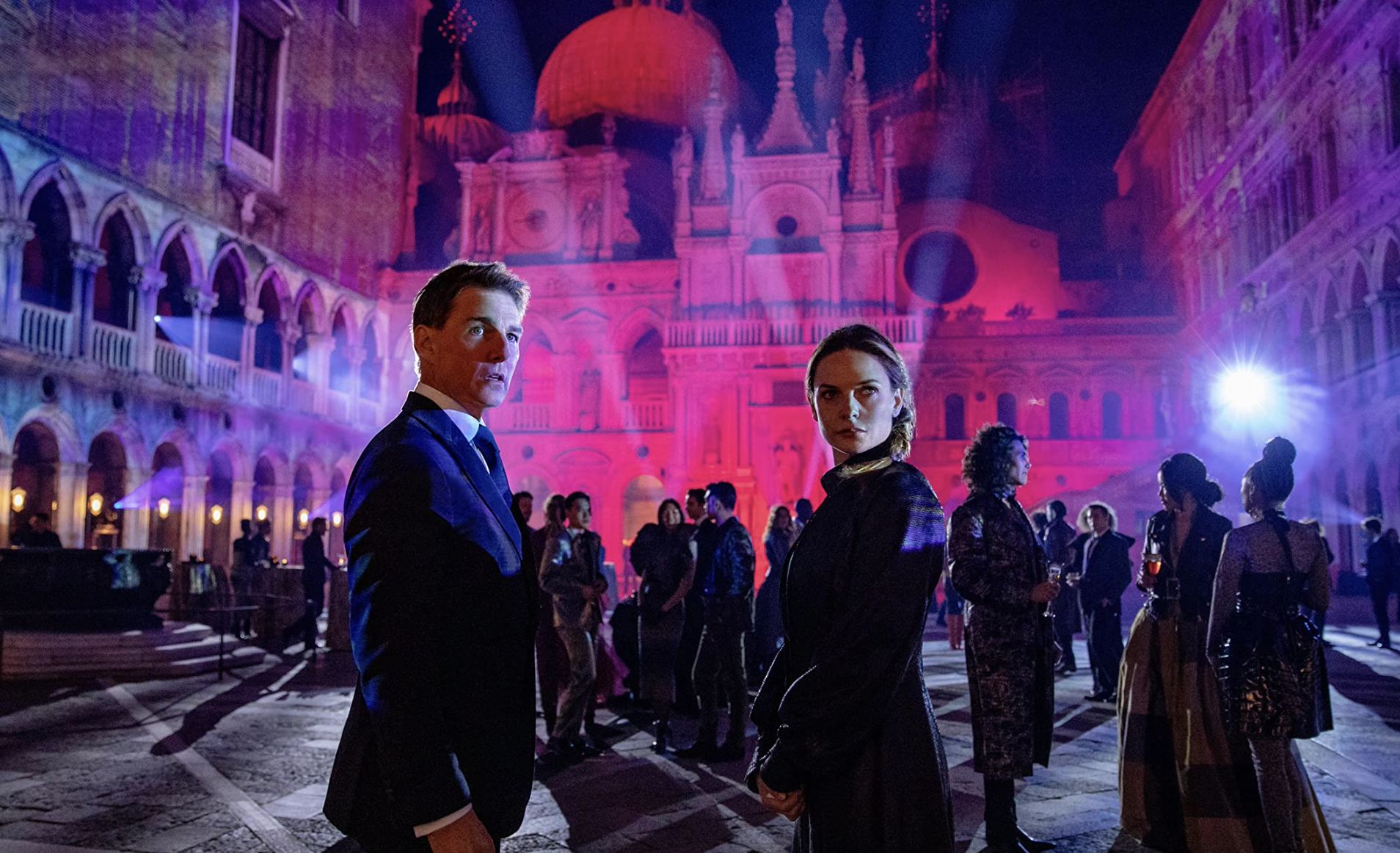
3. Think Global
The opening of M:I 7 takes place below the ice in the Bering Sea. The story travels everywhere from the deserts of Abu Dhabi to England to Italy. Big budget action films send their characters all over the world, especially if it’s a James Bond film or Mission: Impossible movie.
While this isn’t a requirement for action films, audiences love the escapism that comes with international action set pieces. It’s not everyday people get to go to Rome, or get to watch a car chase take place near the Colosseum.
If you’re writing an action film, consider the benefits of going international and how it opens exciting locations and fresh ways to tell a story.
Other recent global action films worth checking out are Uncharted, The Gray Man and Indiana Jones and the Dial of Destiny.
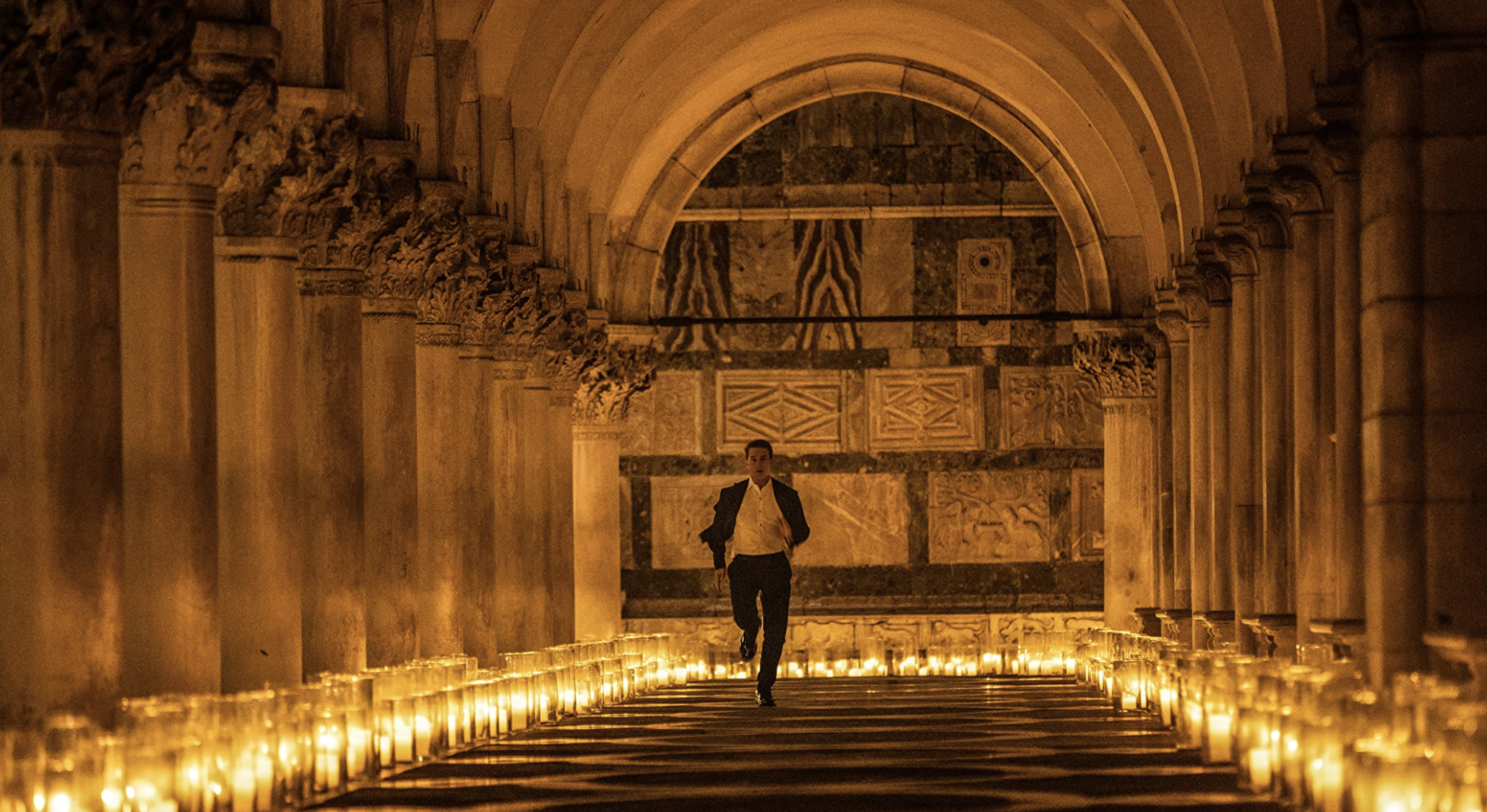
4. It’s Okay to be Impossible
Have you ever noticed that a car can flip over a 100 times off a cliff and the hero walks away with barely a scratch on them? Or they can brutally fight 20 bad guys and run away without even a limp?
There are some wildly impossible things that happens in action films and M:I 7 is no exception. Hunt suffers a lot of trauma that would kill just about anyone else, but the audience believes he can walk away easily because it fits the context of the story. Action scenes often rely on suspended belief so get creative. Let your heroes be like Ethan Hunt (if it makes sense) and let them get hit by cars and have them stand up to fight again, have them easily duck tunnels while topside on a speeding train or swing gracefully on the upper floors of the Burj Khalifa.
We want to see heroes do the impossible, just make sure it’s believable.

5. Tell the Audience It Won’t Work
In one of the major stunts in the film — the motorcycle off the cliff stunt seen in the trailer — Hunt explains to Benji (Simon Pegg) that there is no way he can jump off the cliff, open his parachute and live to make it to where he needs to be.
Unfortunately, there is no other way. What adds suspense to this slice of action is that the hero flat out thinks it won’t work. It’s a great set up for writers to use in just about every genre and one constantly deployed in Mission: Impossible with Cruise rolling his eyes before he embarks on a stunt.
It’s a magician’s trick that makes the action that much more engaging because the audience is intrigued about how the scene will play out. Think about this trick the next time you’re writing an action scene and pepper in some doubt from the heroes.
Read More: 5 Screenwriting Takeaways: How ‘No Time to Die’ keeps action fresh
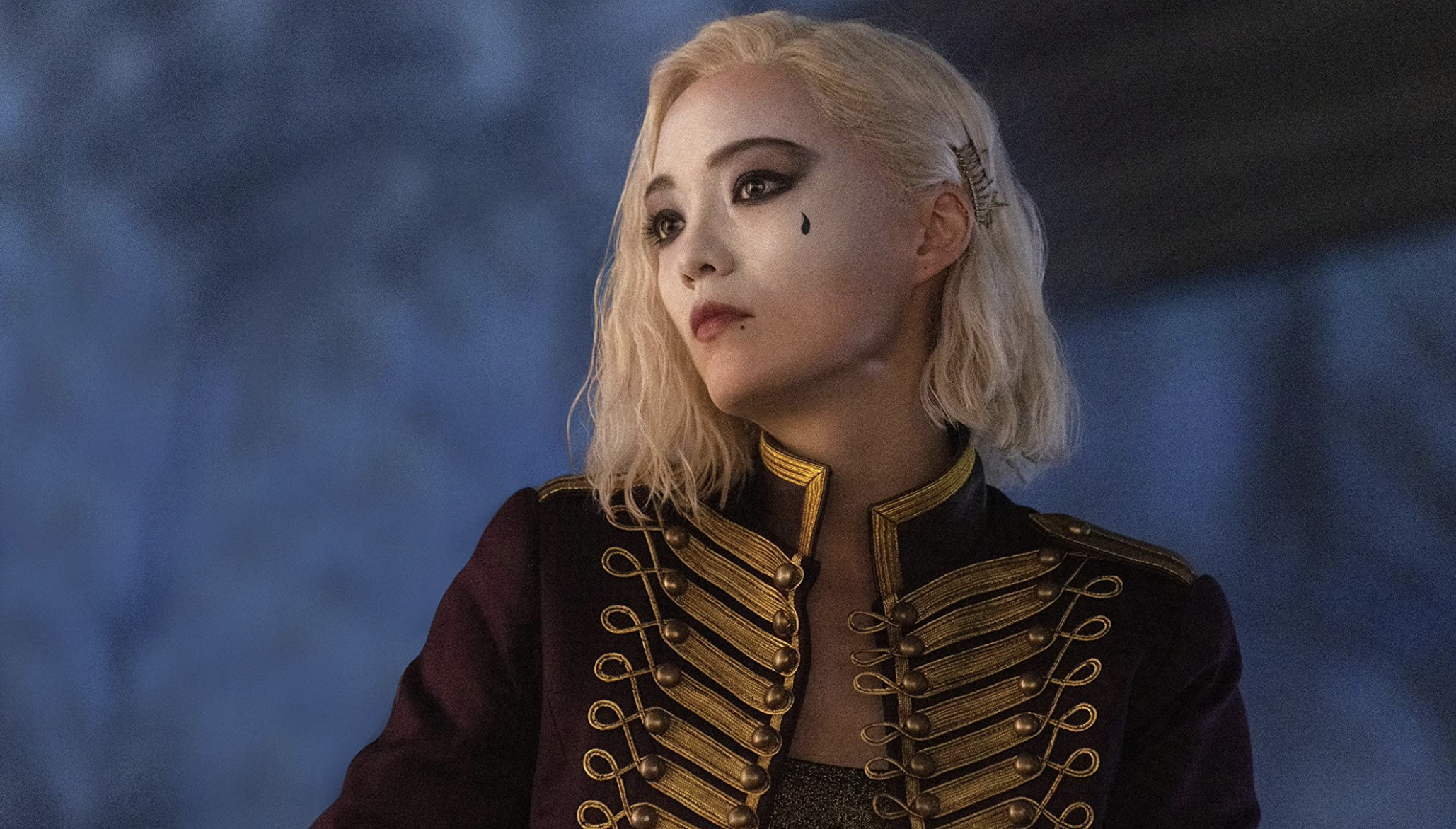
6. Story and Character
Have you ever been watching a movie and when the next big action scene takes place you don’t really care? It’s most likely because you’re not invested in the character or the story so the action scene is just noise.
Action movies are stories first, it’s just the action that drives the narrative. When Hunt fights two villains in an alleyway, the audience cares what happens. At the end of the film during the climactic train scene, the audience is invested in how Hunt saves the day.
But forget about Ethan Hunt and his friends who we’ve seen in several Mission: Impossible films. The first scene of M:I 7 takes place on a Russian submarine and involves a group of characters that the Mission: Impossible universe has never seen before and yet the suspenseful action engages the audience because it’s setting up a story and could quickly establish empathetic characters.
7. Unoriginal, Yet Original
The final scene is a wild ride on a train that involves Ethan Hunt saving the day and hoping to survive topside on a speeding train. 27 years ago, this is how the first Mission: Impossible concluded. And now, in M:I 7, this is how it ends — a fight on top of a runaway train. Here’s the thing, this isn’t the only action scene on a train in a movie that came out in July of this year! Indiana Jones and the Dial of Destiny starts out with one.
Just like a story is almost never original at its core, neither is an action scene. It’s your job to make the unoriginal concept original. Tom Cruise famously runs in almost all his movies so what makes him running in M:I 7 unique? It’s the reason he’s running, it’s where he’s going and what gets in his way.
Creating action scenes is no different than writing the story you want to tell. Make sure it’s original in its own way and find the unique aspects that make your scenes stand out.
Action scenes are filled with amazement and wonder. The best ones trick the audience when they think they can’t be tricked. Let’s face it: Tom Cruise doesn’t die in his movies. But what keeps the audience at the edge of their seats is watching the hero in situations where they might die and wondering how the hell they’re going to make it out alive. Or will they?
The audience is engaged because they care about the characters and they want to enjoy the ride with them.
Read More: 5 Must-Haves For Writing Action Sequences
Written by: Steven Hartman
Steven Hartman is an award-winning, optioned screenwriter. He was a Top 5 Finalist in Big Break’s Historical Category in 2019 and won Best Action/Adventure in Script Summit’s Screenplay Competition in 2021. He holds a Bachelor of Arts degree from Columbia College and had internships at Jerry Bruckheimer Films and Village Roadshow Pictures. Steve is a full-time writer and creative video producer by day and a screenwriter and novelist by night.- Topics:
- Screenwriting & Craft



